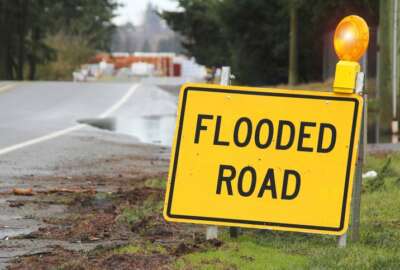
Democrats scold DoD over incomplete climate change report
Top House Armed Services Committee Democrats think the Defense Department skimped on its climate change study last year.
Top Democrats in the House Armed Services Committee are calling on the Defense Department to revise a climate change report, which did not meet the standards of a 2018 law.
The study reported that most of DoD’s operationally crucial bases in the United States are vulnerable to recurrent flooding and drought, and even more will be in danger in the next 20 years.
While the report shows concerning trends for the stability of DoD’s bases, Democrats said in a Jan. 25 letter to acting Defense Secretary Patrick Shanahan that the report glossed over important provisions in the law. The most glaring omission, they said, is that the report does not lay out the top 10 most vulnerable installations to climate change for each service, and does not outline any specific measures to mitigate climate change issues, including their costs.
The letter — signed by full committee Chairman Adam Smith (D-Wash.), Intelligence, Emerging Threats and Capabilities Subcommittee Chairman Rep. Jim Langevin (D-R.I.) and Readiness Subcommittee Chairman Rep. John Garamendi (D-Calif.) — recounted a previous letter sent to former Defense Secretary Jim Mattis about the report, which “not only reiterated the congressional intent of the law, but also offered to answer any questions the secretary may have had about portions of the law that were ambiguous.”
The letter said “it is deeply disappointing that the department did not take notice of that correspondence and subsequently failed to fulfill its statutory mission.”
Related Stories
Langevin, who authored the amendment in the 2018 National Defense Authorization Act, told Federal News Network he was disappointed that DoD did not include installations outside of the United States in its assessment.
“I left no geographic limitation in the requirement and we should have been looking globally,” he said. “We have to maintain our bases globally and we need to be able to project power forward. To not look at the climate change challenges we face globally is a mistake and a flaw in the report.”
Langevin said he wanted the provision added so Congress and DoD could do everything possible to build in resiliency to protect bases and national security.
“The loss from climate change is not only in dollar terms, but in lost training or lost capabilities. If a base is underwater or out of commission there are readiness costs to that, and preparedness costs as well as physical costs,” Langevin said. “I want us to be realistic, as well as cognizant, of the threats and challenges we face and then do our best to protect against those losses.”
The United States was battered by a handful of devastating superstorms over the past few years. Military installations have had to change the way they prepare and think about natural disasters, which may become more severe and frequent due to changes in climate. Last October, Tyndall Air Force Base was devastated by Hurricane Michael.
The base held its first industry day to begin rebuilding on Thursday, which shared the current state of the base, previewed future plans and discussed timelines for rebuilding. Some estimates range as high as $3 billion.
“In the Department of Defense we typically do one or two construction projects per year on a single installation. We’re now looking at how to do construction on a massive scale in a very short period of time and want industry to help us do so in the best way available,” Amy Vandeveer, Air Force Civil Engineer Center subject matter expert for installation planning, said. “We hope that our partners in industry will help us discover what’s possible for Tyndall.”
Copyright © 2025 Federal News Network. All rights reserved. This website is not intended for users located within the European Economic Area.
Scott Maucione is a defense reporter for Federal News Network and reports on human capital, workforce and the Defense Department at-large.
Follow @smaucioneWFED





